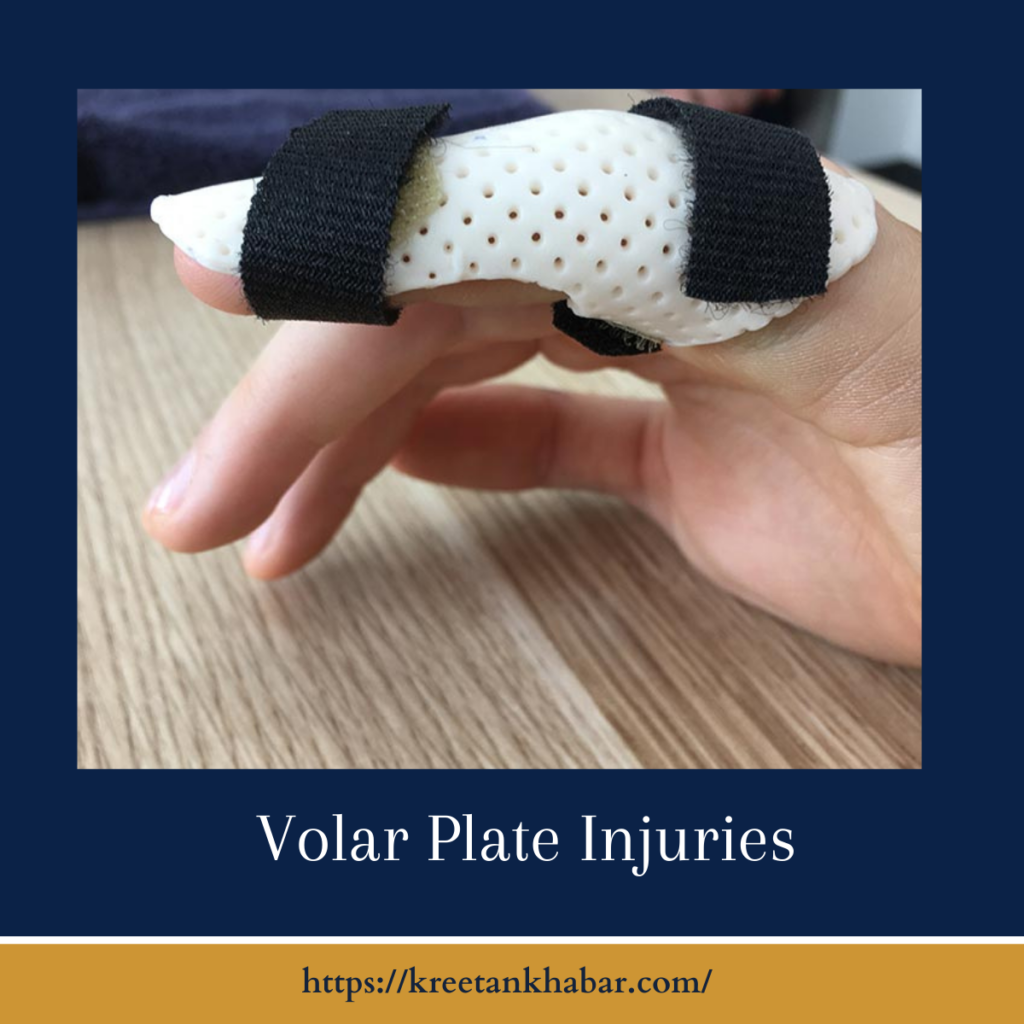Volar Plate Injuries: A Comprehensive Guide
Introduction
Within the intricate architecture of the hand, the volar plate stands as a crucial stabilizer, anchoring the finger joints and facilitating dexterous movements. However, when this resilient structure faces injury, it can pose challenges to hand function and demand careful consideration in both diagnosis and treatment. Volar plate injuries, though less common than other hand injuries, warrant a nuanced understanding to ensure effective rehabilitation and restoration of hand functionality. This exploration delves into the anatomy of the volar plate, the mechanisms of injury, common types, and the intricate dance of treatment options available for those grappling with this specific hand ailment.

Anatomy of the Volar Plate
The volar plate is a strong ligament located on the palmar side of the finger joints, primarily the proximal interphalangeal (PIP) joint. Its robust structure serves to prevent hyperextension of the joint while allowing for smooth flexion and extension movements. Composed of dense fibrous tissue, the volar plate is integral to maintaining joint stability and protecting the delicate structures within the finger.
Mechanisms of Injury
Volar plate injuries often result from hyperextension of the PIP joint, commonly occurring during activities that involve catching a ball, forcefully straightening a bent finger, or accidental trauma. The injury may present as a tear, rupture, or avulsion of the volar plate, and the severity can vary based on the force and direction of the impact.
Types of Volar Plate Injuries
- Sprains: Mild volar plate injuries may manifest as sprains, involving the stretching or partial tearing of the ligament. These injuries often present with pain, swelling, and limited range of motion.
- Dislocations: More severe cases can lead to joint dislocations, where the volar plate is disrupted, and the joint may become visibly misaligned. Immediate medical attention is crucial to address dislocations and prevent further damage.
- Avulsions: In some instances, the volar plate may avulse or tear away from its attachment site. This can result in instability of the joint and may require surgical intervention for repair.
Treatment Options
The treatment landscape for volar plate injuries is as diverse as the injuries themselves, encompassing a range of options tailored to the nature and severity of the injury. For mild sprains, conservative management often takes the forefront, involving rest, ice, compression, and elevation (RICE), accompanied by the use of splints to immobilize the injured finger. Physical therapy becomes a crucial ally in this phase, aiding in the restoration of strength, flexibility, and range of motion. In cases of joint dislocations, prompt medical attention is paramount, with manual reduction of the joint often necessary to realign it.
Post-reduction, splinting and rehabilitation become integral components of the recovery process. Severe avulsions or complex injuries may necessitate surgical intervention, where techniques range from repairing the torn ligament to reattaching an avulsed volar plate or addressing associated fractures. Rehabilitation following surgical procedures plays a pivotal role in optimizing outcomes, focusing on the gradual restoration of finger function. Ultimately, the nuanced approach to treatment underscores the importance of considering the specific characteristics of each volar plate injury to chart a course towards effective recovery and the restoration of hand functionality.
- Conservative Management: Mild sprains may be managed conservatively with rest, ice, compression, and elevation (RICE), along with the use of splints to immobilize the injured finger. Physical therapy may aid in restoring strength and range of motion.
- Joint Reduction: Dislocations often require prompt medical attention, involving the manual reduction of the joint to realign it. Following reduction, splinting and rehabilitation play crucial roles in the recovery process.
- Surgical Intervention: Severe avulsions or complex injuries may necessitate surgical intervention. Surgical techniques may include repairing the torn ligament, reattaching an avulsed volar plate, or addressing associated fractures.
- Rehabilitation: Regardless of the chosen treatment, rehabilitation is a key component of recovery. Physical therapy aims to restore finger function, strength, and flexibility while preventing stiffness or chronic joint instability.
Conclusion
Volar plate injuries, though relatively uncommon, demand a nuanced approach to diagnosis and treatment to ensure optimal recovery and hand function. Whether managed conservatively or requiring surgical intervention, the collaborative efforts of patients, hand specialists, and rehabilitation professionals are essential for navigating the intricate path toward healing. By understanding the anatomy, mechanisms of injury, and available treatment options, individuals facing volar plate injuries can embark on a comprehensive journey toward regaining the strength and agility of their hands.
Read also : Exploring the Delightful Boost of the Green Tea Shot 2023